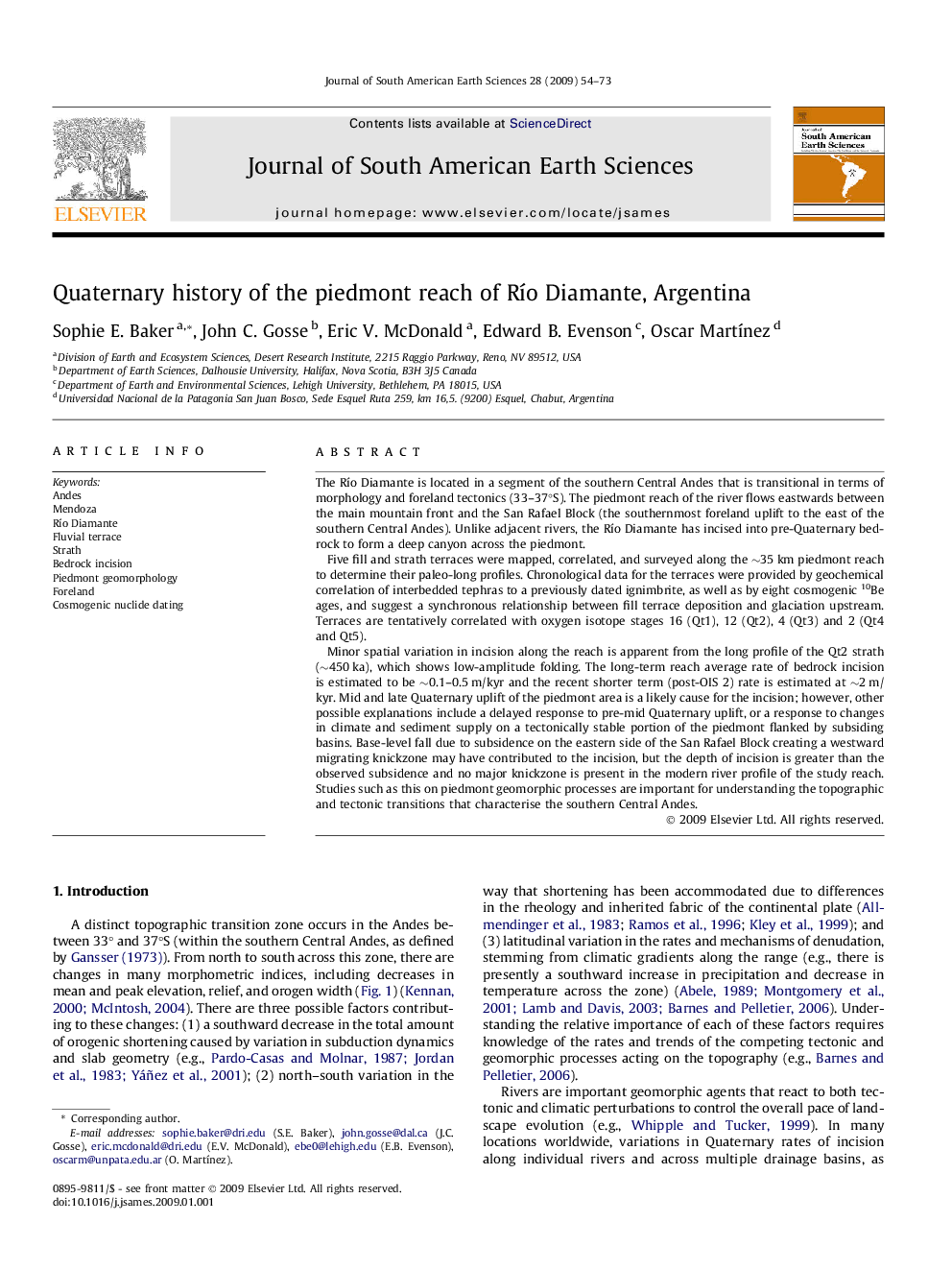| Article ID | Journal | Published Year | Pages | File Type |
|---|---|---|---|---|
| 4682861 | Journal of South American Earth Sciences | 2009 | 20 Pages |
The Río Diamante is located in a segment of the southern Central Andes that is transitional in terms of morphology and foreland tectonics (33–37°S). The piedmont reach of the river flows eastwards between the main mountain front and the San Rafael Block (the southernmost foreland uplift to the east of the southern Central Andes). Unlike adjacent rivers, the Río Diamante has incised into pre-Quaternary bedrock to form a deep canyon across the piedmont.Five fill and strath terraces were mapped, correlated, and surveyed along the ∼35 km piedmont reach to determine their paleo-long profiles. Chronological data for the terraces were provided by geochemical correlation of interbedded tephras to a previously dated ignimbrite, as well as by eight cosmogenic 10Be ages, and suggest a synchronous relationship between fill terrace deposition and glaciation upstream. Terraces are tentatively correlated with oxygen isotope stages 16 (Qt1), 12 (Qt2), 4 (Qt3) and 2 (Qt4 and Qt5).Minor spatial variation in incision along the reach is apparent from the long profile of the Qt2 strath (∼450 ka), which shows low-amplitude folding. The long-term reach average rate of bedrock incision is estimated to be ∼0.1–0.5 m/kyr and the recent shorter term (post-OIS 2) rate is estimated at ∼2 m/kyr. Mid and late Quaternary uplift of the piedmont area is a likely cause for the incision; however, other possible explanations include a delayed response to pre-mid Quaternary uplift, or a response to changes in climate and sediment supply on a tectonically stable portion of the piedmont flanked by subsiding basins. Base-level fall due to subsidence on the eastern side of the San Rafael Block creating a westward migrating knickzone may have contributed to the incision, but the depth of incision is greater than the observed subsidence and no major knickzone is present in the modern river profile of the study reach. Studies such as this on piedmont geomorphic processes are important for understanding the topographic and tectonic transitions that characterise the southern Central Andes.
